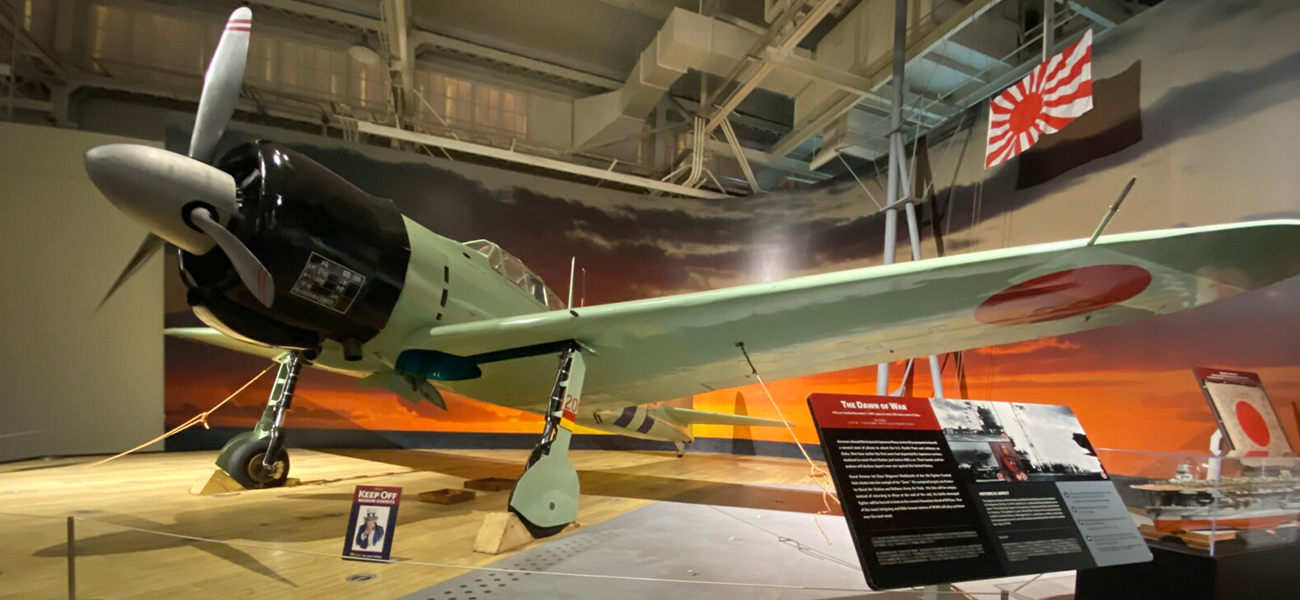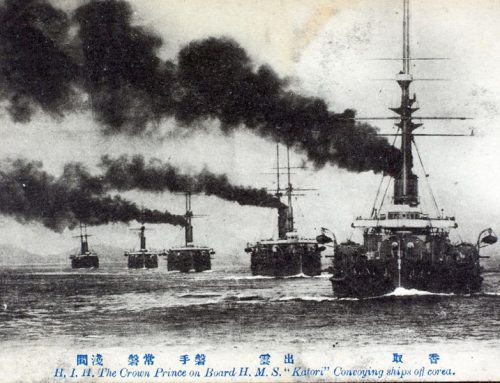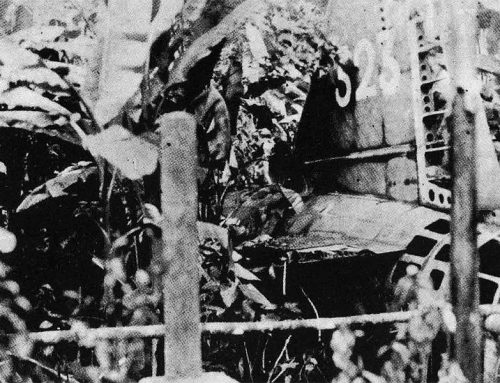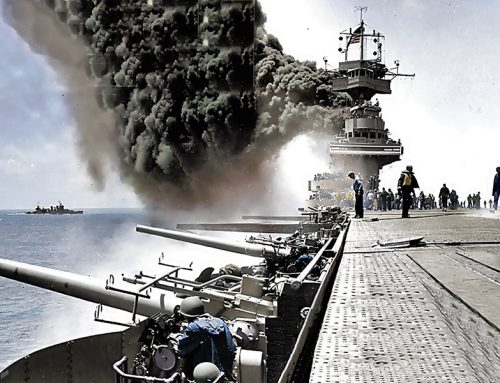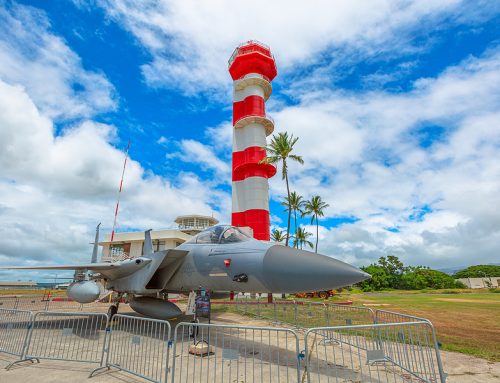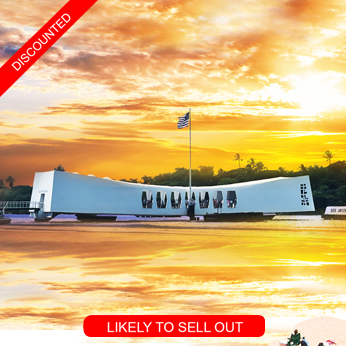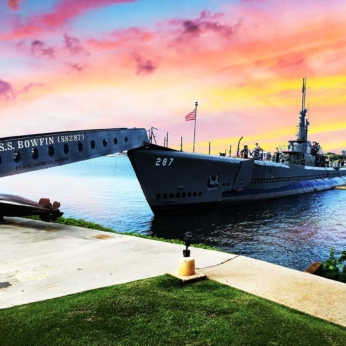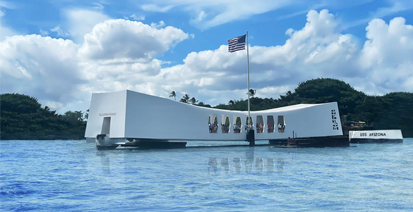Flying Through History: The Pearl Harbor Aviation Museum
The Pearl Harbor Aviation Museum on the historic Ford Island is a treasure trove of historical aircraft, interactive exhibits, and inspiring stories. Beginning the journey at the Pearl Harbor Visitor Center and the USS Arizona Memorial, and concluding with a visit to the Pearl Harbor Aviation Museum creates a thoughtful and chronological exploration of the events surrounding December 7, 1941. As visitors step onto the grounds of the Pearl Harbor Visitor Center, they are greeted by a somber yet educational atmosphere, setting the tone for the historical significance of the site. In this blog post, we’ll take you on a journey through this captivating museum and explore why it’s a must-visit attraction in Pearl Harbor for history enthusiasts and fans of aviation.
A Living Museum of Aviation:
The Pearl Harbor Aviation Museum isn’t a static museum. It offers a dynamic and immersive experience, allowing visitors to step into history. The museum is situated on Ford Island, in the middle of Pearl Harbor, making it a part of the very place where history unfolded. After absorbing the broader historical context at the Visitor Center, visitors can then proceed to the Pearl Harbor Aviation Museum. This transition allows for a seamless shift from the overarching narrative to a more focused exploration of the role of aviation during the attack. The museum’s collection of aircraft, artifacts, and interactive exhibits brings to life the aerial aspects of the events, highlighting the technology, heroism, and challenges faced by those involved in the defense of Pearl Harbor.
By concluding a visit to the Pearl Harbor Aviation Museum, visitors gain a deeper appreciation for the aerial battles that unfolded in the skies above Pearl Harbor. The tangible connection to historic aircraft and the opportunity to step into the past through immersive exhibits enhance the overall understanding of the pivotal role aviation played during that critical period.
In this sequential journey, visitors move from the broader historical context to a more specific exploration, allowing for a nuanced and layered understanding of the events at Pearl Harbor. The chronological progression fosters a sense of reflection and appreciation for the resilience and sacrifice of those who experienced and responded to the attack.
Historical Significance:
The museum’s location is not incidental. It stands as a testament to the events of December 7, 1941, when the Japanese attacked Pearl Harbor. The attack propelled the United States into World War II, and Ford Island, where the museum now sits, bore witness to that pivotal moment in history. The hangars that house the museum’s collection are the same structures that survived the attack, giving visitors a direct connection to the past. The two hangers are:
• Hangar 37: This hangar is known for its association with the attack on Pearl Harbor. It is a historic structure that still bears the scars from the events of December 7, 1941. Hangar 37 houses a variety of exhibits, aircraft, and artifacts related to the history of aviation and the events surrounding the attack.
• Hangar 79: Like Hangar 37, Hangar 79 is another historic hangar on Ford Island. It also withstood the attack on Pearl Harbor. Hangar 79 features additional exhibits and displays related to aviation history, World War II, and the impact of the attack.
Both hangars provide visitors with a unique opportunity to step back in time and experience the history of Pearl Harbor and aviation during World War II. The museum’s exhibits showcase not only the military significance of the events but also the technological advancements and human stories associated with aviation in the Pacific theater.
Aircraft Collection:
One of the most remarkable aspects of the Pearl Harbor Aviation Museum is its collection of historic aircraft. The museum boasts an impressive array of planes and helicopters, including some that were directly involved in the events of World War II. From fighter planes like the F4F Wildcat and P-40 Warhawk to bombers like the B-25 Mitchell, the collection provides a comprehensive view of the aircraft used during the war.
B-25B Mitchell: This medium bomber is famous for being used in the Doolittle Raid, a daring air raid on Japan in April 1942.
F4F Wildcat: A carrier-based fighter aircraft used by the United States Navy and Marine Corps during World War II.
P-40 Warhawk: A single-seat, single-engine fighter aircraft that was used by the U.S. Army Air Forces and other Allied nations during World War II.
A6M2 Model 21 Zero: This Japanese fighter aircraft, often referred to as the “Zero,” was used by the Imperial Japanese Navy Air Service during World War II.
F-86 Sabre: A transonic jet fighter aircraft that played a crucial role in the Korean War.
F-104 Starfighter: An American supersonic interceptor aircraft known for its sleek design and high speed.
Beech C-45 Expeditor: A military transport and training aircraft used during and after World War II.
These examples are not exhaustive, and the museum has additional aircraft and rotates exhibits.
Visitors can walk around and even see inside some of these aircraft, gaining a hands-on understanding of their design and significance in wartime aviation. The museum’s knowledgeable staff is on hand to provide insights and answer questions, making this experience both educational and engaging.
Interactive Exhibits:
The Pearl Harbor Aviation Museum is not just about admiring aircraft from a distance. It also offers a range of interactive exhibits that bring history to life. For example, the “Battle Stations” exhibit allows visitors to experience the chaos of the attack on Pearl Harbor through a virtual reality simulation. It’s a powerful way to understand the fear and confusion that enveloped the island on that fateful day.
Additionally, the “Home of the Brave” exhibit focuses on the personal stories of those who lived through the attack and showcases artifacts and memorabilia from the time. These exhibits humanize history and provide a deeper connection to the events that unfolded.
Restoration and Preservation:
The museum is not just about showcasing history; it’s also actively involved in preserving it. The Restoration Shop, which is open to visitors, is a fascinating place where skilled craftsmen and volunteers work diligently to restore vintage aircraft to their former glory. This ongoing process of restoration ensures that these aircraft remain a living part of history and can be enjoyed by future generations.
A Window into World War II:
The Pearl Harbor Aviation Museum goes beyond the events of December 7, 1941. It provides a comprehensive view of World War II and its impact on aviation. The “War in the Pacific” exhibit, for instance, offers a broader perspective on the conflict, covering various aspects of the war and its significance in the Pacific Theater.
The museum’s location in Pearl Harbor also offers visitors the chance to explore other historic sites in the vicinity. The USS Arizona Memorial, the Battleship Missouri Memorial, and the USS Bowfin Submarine are all nearby, making it possible to create a full-day itinerary that immerses you in the history of World War II.
Honoring Heroes:
The Pearl Harbor Aviation Museum is not just about aircraft and artifacts; it’s also a place to honor the heroes of World War II. The museum’s Wall of Honor pays tribute to those who served and, in many cases, made the ultimate sacrifice. It’s a place to remember and recognize the brave men and women who defended their country during a time of great adversity.
In Conclusion: A Flight Through Time
The Pearl Harbor Aviation Museum is a living tribute to the history of aviation and the heroes of World War II. It offers a unique and immersive experience that allows visitors to step back in time, explore vintage aircraft, and gain a deep understanding of the events that transpired on that fateful day in December 1941. It’s not just a museum; it’s a flight through time, a chance to honor the past, and an opportunity to learn from history. When you visit Pearl Harbor, don’t miss the chance to explore this remarkable museum, where aviation history soars high above the waters of the Pacific.
Most Popular Oahu Tours
Best Pearl Harbor Tours – NOW ON SALE
The following tours are recognized as the most popular Pearl Harbor Tours on Oahu. While generally, our price is the lowest in the market now, for a limited time, they are on sale too. Please be advised that Pearl Harbor tickets and USS Arizona Memorial tickets are included in all of our Arizona Memorial Tours, Pearl Harbor small group tours, and private Pearl Harbor tours.



